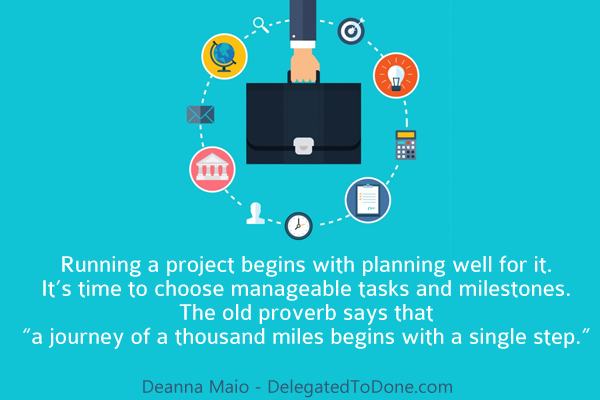Let’s plan your next project. The team has come up with a vision and objectives for the project. Each person can virtually “see” what the desired outcome will be. Now it’s time to make that happen.
Running a project begins with planning well for it. It’s time to choose manageable tasks and milestones. The old proverb says that “a journey of a thousand miles begins with a single step.” The road to project completion seems shorter when there are planned stops along the way. These are the milestones. When you reach each checkpoint, evaluate the tasks that have been completed thus far. The team stays encouraged and even excited to see the fruits of their labors.
6 Steps to Effectively Running any Project
The best thing about these steps is that they can apply to any project, large or small, for any company, large or small. They are a kind of “best practices” to follow as a blueprint for success.
- List the tasks required for completion of the project – Be as specific as you need to be. Some tasks may be combined into one larger task where appropriate. Brainstorm all needs on a whiteboard and then formulate them into manageable pieces. Assess your team’s skills to see if anyone else is needed to make these tasks happen.
- Place the tasks in sequence from beginning to end or end to beginning – You can’t put the cart before the horse. Based on the expected outcome, number your tasks in order of what needs to happen first, second, third and so forth. Some tasks may overlap at points. Identify those as well.
- Identify the project phases and milestones – Group tasks together with appropriate milestones between them. Use milestones as places to communicate with the client, report off on what has already been done, plans for the next phase and teammate celebrations.
- Set start and end dates for each phase – Some teams begin with the completion date and work backwards to see how much time they can allow per milestone (markers between tasks). Because it is at the beginning of the project, it is acceptable to go back to the client and ask for more time based on what needs to be accomplished. Build in extra time for the unexpected delays.
- Decide on a tracking and/or reporting system – It can be the same system used to communicate with teammates or a separate system for direct client reporting. The systems in place are determined by who needs to know what information and when.
- Complete and pass out your project plan – Those who are in key positions have weighed in on the project plan. Any additional feedback may be given by other teammates. Make changes as needed before delivering a plan to the client for their feedback.

